Introduction
about the writer
Audrey Timm
Dr Audrey Timm is a horticultural scientist specialised in ornamental horticulture. Since joining International Association of Horticultural Producers (AIPH) as Technical Advisor in early 2019, Audrey leads their Green City initiative with the purpose of increasing the quality and quantity of living green in urban environments, and of nurturing a strategic shift in city form and function.
about the writer
Timothy Blatch
Timothy is an urban development professional with a background in the social sciences and city and regional planning. In his role as a Green City Consultant at AIPH, the world’s champion for the power of plants, Timothy is responsible for progressing strategic partnerships within the Green City programme and for coordinating the AIPH World Green City Awards.
As urban and environmental practitioners and change-makers, whether in the public, private or NGO sectors, we work to respond to the global imperative to bring more nature into our cities, with a seemingly clear understanding of the science that underpins the urgency of the current moment. We know full well that nature provides many benefits which sustain our increasingly urban lives. We also know that this nature is diminishing at unprecedented rates and needs to be protected, conserved, and even restored as a matter of priority. Acknowledging the need to act now is an easy message to promote, and at the strategic planning level, awareness, and advocacy of the need for action are at an all-time high. But do we know what this action entails at a practical level?
We know that there is global recognition of the value of plants in providing solutions for common city problems. However, we propose that there is a common deficit in recognition of what this means in terms of moving from planning to implementation, from theory to practice, and from the strategic realm to the practical. This is often where we, as city shapers, are in danger of falling short.
If we accept the hypothesis that plants are the critical foundations of urban nature, then how do we go about ensuring we procure, prepare, and plant the right plants in the right places when implementing nature-based solutions? How can we enable better decision-making when it comes to plant selection and preparation? Is a closer engagement with the ornamental horticulture industry what is missing?
The global green cities community welcomes bold commitments by politicians, and strategic policy and planning visions of restoring significant areas of habitat or of planting impressive numbers of trees in and around cities in the coming years. We ask the question, however, whether these commitments consider how these ambitions are to be achieved. In many cases, plants need to be carefully selected and procured months, and even years, in advance of implementation, and need to be prepared and grown in such a way as to ensure they are fit for purpose. Where do we find stories of best practice in engaging the horticultural industry throughout the process? Do you know of examples of multidisciplinary cooperation that has ensured that the right plants were planted in the right places to deliver on the intended outcomes of an urban greening project?
Let’s think for a moment about how the global rise in attention and awareness of the benefits of nature-based solutions has strengthened connections, partnerships, and engagement with the ornamental horticulture industry. Are we able to effectively implement urban nature-based solutions and restore urban natural habitats without engaging these critical stakeholders – the breeders and producers of plants? If not, why not? Do we need to be?
Let’s take the Bosco Verticale project in Milan as an example. The two residential skyscrapers feature facades covered with the leaves of 800 trees, 4,500 shrub, and 15,000 other plants. The plants found on the façade make up the equivalent of more than two hectares of woodland and undergrowth concentrated into just 3,000 square meters of urban space – a multiplication factor of almost 7 times. We invite you to take a look at how this urban greening project provides nature-based solutions to a wide range of urban challenges: https://aiph.org/green-city/guidelines/case-studies/case-studies-bosco-verticale-milan/
It might seem obvious that careful plant selection made a significant contribution to the capacity of this project to deliver an impressive range of green solutions. What is less known is the fact that the selection of species was informed by a three-year research project, undertaken with horticulturalists, botanists, and ecologists, during which the plants were pre-cultivated in containers in a nursery to accustom them to the conditions they would be subjected to, while producing perfectly adapted root systems. Planting was then carried out progressively over a three-year period, as the building façades were completed, and was completed two years prior to the first residents of the towers moving in. In this example, the process of planning, selecting, producing, procuring, and planting took more than five years.
What does this mean in terms of our approach to planning and implementing urban nature-based solutions which harness the power of plants?
We invite respondents to consider the critical role of plants and the critical importance of careful planning and plant selection in enabling successful urban greening projects. We welcome stories of best practices where the careful selection of plants and engagement with suitable growers and producers of these plants has led to the implementation of effective nature-based solutions for specific urban challenges? How do we ensure that these consultations take place in advance of implementation so that plants are integral to the success of these solutions, and not just an afterthought?
Have you considered this in your work? If so, what has been your experience, and what lessons have you learned along the way? If not, how might these considerations strengthen and enrich your approach in the future?
We are interested to explore the knowledge gaps and identify where there is room for capacity building in ensuring that we, as practitioners, are sufficiently equipped to drive the transformative shift to urgent action for nature in cities.
[/answer]Peter Massini
about the writer
Peter Massini
Peter is an experienced green infrastructure policy-maker and practitioner. After a 30-year career in both the third sector and public sector, latterly as Green Infrastructure Lead for the Greater London Authority, he now works as a consultant advising public and private sector clients.
The decisions as to which plants to use to best effect are often keenly contested between ecologists, landscape architects, arboriculturists, and horticulturists; all focusing on different aspects of the ‘performance’ and ‘purpose’ of the plants selected.
Yet despite this, the decisions as to which plants to use to best effect are often keenly contested between ecologists, landscape architects, arboriculturists, and horticulturists; all focusing on different aspects of the ‘performance’ and ‘purpose’ of the plants selected.
The reality is that all of these professionals can, and should, play an important role in designing and specifying nature-based solutions. The landscape architect will provide the framework and select plants that sit well within a designed landscape whilst the ecologist might champion native plants to complement the local ecology; but it is, perhaps, the arboriculturist and horticulturist who may have the most useful knowledge as to the suitability of different species and cultivars for specific conditions and needs.
In recent years in the UK, there has been increasing inter-disciplinary collaboration driven by requirements such as the Urban Greening Factor and Biodiversity Net Gain which demand outcomes that cannot (yet*) be delivered through the skills and expertise of a single professional discipline.
The Trees and Design Action Group (TDAG)[1] has been one of the driving forces, bringing together people and organisations to improve knowledge and good practice to support better collaboration in the planning, design, construction, and management of urban trees. It has been central to ensuring that the commercial part of the arboricultural industry (the suppliers and contractors) have had the opportunity to contribute their knowledge and expertise to help bridge the gap between policy and practice.
So, perhaps now is the time for a sister organisation to bloom, a Horticulture and Design Action Group (HDAG) – or Horticulture and Urban Greening Action Group (HUDAG) for those who prefer an alliterative acronym. A natural extension of the AIPH Green City initiative, the Action Group (or groups across different international domains) could become the focal point for collaborative ventures between academic institutions, public bodies, NGOs, and commercial companies aimed at providing detailed guidance and specifications on urban plants that complements TDAG’s resources on urban trees[2].
Would this not replicate other forums or initiatives? I don’t think so. In the UK at least, most guidance and training are issued by respective professional institutes (for landscape[3], ecology[4], and horticulture[5], for example). Sure, there is plenty of collaboration, but it isn’t providing, in my view, the specific skills and knowledge needed by a new breed of professionals, those specifically engaged with designing and delivering nature-based solutions in urban areas – ecological engineers, urban greening architects, and green infrastructure designers, to coin just a few. A better understanding of the performance of plants in an urban environment will be a core competency for these nature-based solutionists.
[1] Trees and Design Action Group – Home (tdag.org.uk)
[2] Guides – Trees and Design Action Group (tdag.org.uk)
[3] Landscape Institute | Connecting people, place and nature
[5] About us Chartered Institute of Horticulture www.horticulture.org.uk
Mohan Rao
about the writer
Mohan Rao
Mohan S Rao, an Environmental Design & Landscape Architecture professional, is the principal designer of the leading multi-disciplinary consultancy practice, Integrated Design (INDÉ), based in Bangalore, India
Images from Bangalore and Medellin: who is to say which is where?
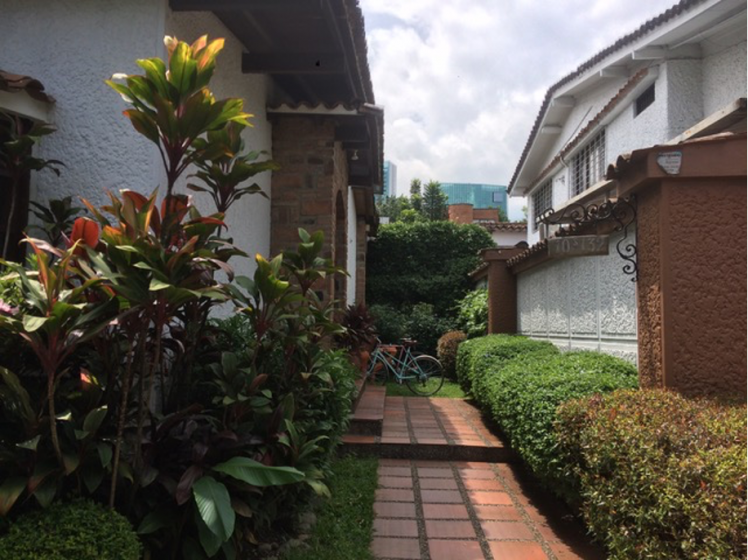
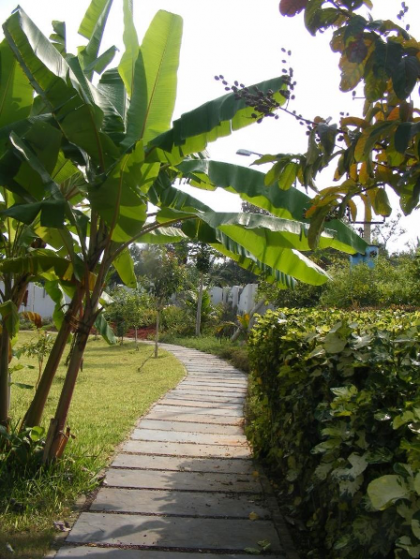
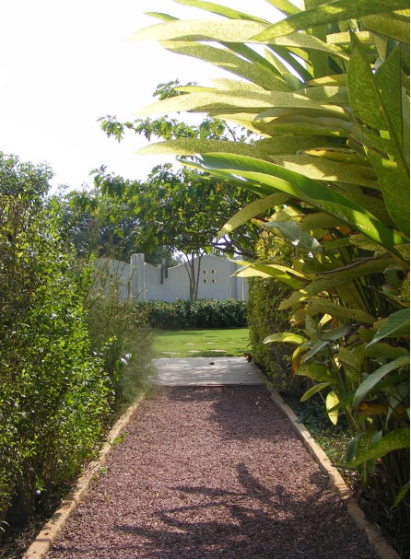
The horticulture industry plays a vital role in mainstreaming the immense floral diversity that one could leverage to address not merely aesthetic considerations but those of resilience, diversity, and endemicity.
And this round table offers the perfect forum for further pondering. The phrase knowledge of plants in the provocation caught my attention – is it really knowledge of plants that is a barrier for the success of nature-based cities? Or is it something else, something deeper? Humanity’s knowledge of floral diversity, built up so diligently and painstakingly over the last three centuries, is extensive and comprehensive. The issue may be not so much in the knowledge as much as in the way it is leveraged. Limiting the discussion to the horticultural aspect of this knowledge, it is worth noting the horticultural industry – one dare says across the globe – is largely driven by aesthetic considerations; an aesthetic rooted in 19th-century ideals of nature, celebrating the exotic.
The challenges that humanity – and the planet – faces from issues like climate change, extreme weather events, and increasing urbanisation need to be tackled, urgently so. As landscape architects, planners, and designers, it is imperative that we consciously address the larger global issues, however, local one’s scale or area of intervention may be. Interventions in urban landscapes play a crucial role in addressing these challenges. A thoughtful deployment of native plant material can help address drought and flood cycles, enable habitat creation and protection for insects, birds, and pollinators, minimise the chemical load on soil and water systems, help tackle urban heat island effect, ameliorate the microclimate; the list is long and is only limited by one’s aspirations for positive change.
The horticulture industry plays a vital role in mainstreaming the immense floral diversity that one could leverage to address not merely aesthetic considerations but those of resilience, diversity, and endemicity. Like any other industry, the horticulture industry too is driven by perceived demands of the markets – specimens seen as the most in-demand are the ones that get the most attention in developing cultivars, in large scale propagation, and in maintaining large stocks. Concerted efforts by the industry to propagate (popularise?) endemic species with manifold advantages can ensure ecologically valuable species are more accessible to, not just landscape professionals, but to lay gardeners too. It is an important opportunity for the industry to shape the nature of the demand and popularise a more mindful and meaningful planting palette.
I am certain many will relate to the struggles one goes through in trying to source native plants specimens since they are rarely available in conventional nurseries and sourcing from the wilderness is increasingly difficult, if not impossible. While catering to conventional demands for the standardised aesthetic plant material, the industry could easily offer a selection of native specimens, catering equally to the casual enthusiast and the serious practitioner.
The horticulture industry invests substantial time and resources in research and development of cultivars that are hardier, less water-intensive, resistant to pests, etc. It is time for some of these efforts to be dedicated in identifying, nurturing, and propagating suitable endemic species; ones that could easily replace the current standard but limited palette. Such a move would go a long way in mainstreaming endemic flora in everyday horticultural practises. This would lead to popularising an entirely new spectrum of plant material which would meet the aesthetic/productivity demands of the designer and the gardener while sustaining a crucial link in sustaining local ecosystems.
Keith Sacre
about the writer
Keith Sacre
Keith Sacre has a MSc in Arboriculture and Urban Forestry, a BSc in Arboriculture, a BSc in Social Science, and a post-graduate diploma in management studies. He is currently a director at Barcham Trees, a co-founder of Treeconomics, a founder member and trustee of the Trees and Design Action Group, and a trustee of the UK Arboricultural Association, and is a previous chair of the Association.
Does the horticultural industry have a role to play? Well, of course, it does, but it also has to develop an understanding of what nature-based green cities are and how horticultural and plant knowledge is critical to develop the ability to set specific plant knowledge in context.
The studies have revealed, in general, that the urban forest is highly dependent on a relatively low number of tree species and faces many challenges.
Of these challenges, two are particularly important if the contribution trees make to nature-based green cities is to be, not only sustained, but enhanced into the future. The two challenges are climate change and the threat of alien pests and disease in the UK. An urban forest heavily dependent on relatively few species is vulnerable and lacks the resilience necessary to cope with either of these challenges.
To meet the challenges which the future holds the species diversity needs to be increased but the question of which species should be planted and in what numbers needs to be answered. This depends on a knowledge of trees and their characteristics. The tolerances of individual species must be known and understood so that appropriate selections are made. Knowledge of their natural environment is critical as the challenges of climate change are going to favour some species and not favour others. Some of which are already present in the population and are threatened as change occurs. There also has to be an understanding and knowledge of the growth characteristics of individual species and how they might impact the environment in which they are planted. It remains true that most landscape architects and others involved in the planting of trees work from a very limited palate which is unlikely to enhance the possibility of nature-based green cities delivering. This limited palate is driven by a safety-first approach and a serious lack of knowledge of what else is available and the capacity of nurseries to produce what is required.
Many tree-planting programmes are driven by numbers and percentage increases in canopy cover which are ill-informed and not strategically planned beyond one planting season. Yet there is an unwritten expectation that planting will ensure that the ecosystem services required will automatically follow. Tree species have different characteristics. Their age potential varies enormously with some approaching the end of their useful life after sixty or so years while others will live beyond a thousand years. Each species has the potential to deliver different ecosystem services at a different rate over a different period. If the potential of nature-based green cities is to be realised, then it is essential that greater tree and plant knowledge is utilised and put into practice.
There is much knowledge already in the public- domain but it is not widely utilised. Examples such as the Trees and Design Action Group’s Tree Species Selection Guide authored by Dr. Andrew Hirons from Lancaster University and Myerscough College need to be more widely promoted but this must be coupled with a desire and intention to use different species and understand why. The lazy approach to species selection is fuelled by a lack of knowledge and the need to meet narrow aesthetic objectives cast aside, and tree knowledge respected and valued.
Does the horticultural industry have a role to play? Well, of course, it does, but it also has to develop an understanding of what nature-based green cities are and how horticultural and plant knowledge is critical to develop the ability to set specific plant knowledge in context. It also requires a focus which is not entirely based on selling trees and plants irrespective of their capability to do the job required of them.
Maria Aragão
about the writer
María Aragão
Portuguese Landscape Architect, educated in the United States. Currently the Technical Support to the Board of Directors of the Portuguese Association of Landscape Architects, a TNOC Festival 2022 Curator, running a small private practice, and raising two boys, two dogs, three cats, and three chickens.
As far as plants are concerned and, since even the most naturalized of urban settings is man-made, it is of the utmost importance to have proper knowledge of plants.
Actually, I believe that the success of nature-based green cities is only possible with a better knowledge of the entire urban ecological cycle, which also includes plants, in addition to air, water, soil, fauna, as well as considerations for environmental quality, sustainability, and human well-being within cities and towns. As the rate of urbanization intensifies throughout the globe, and the devastating effects of global warming can no longer be ignored, urban ecosystems and green corridors are a proven important piece of the city. They are the support, the infrastructure, to ensure that people have a healthy and sustainable place to live, work, and visit. The ecological connection between the countryside and the city must not only be restored, but it must be promoted and nurtured as if life in the city depended on it. Because, in fact, it does! Human connection to nature has been the basic support for our existence for millions of years and, in a world where the effects of climate change rule, it is of the utmost importance that cities lead the transition to more sustainable and resilient human living environments, where ecosystem services and biodiversity are promoted.
As far as plants are concerned and, since even the most naturalized of urban settings is man-made, it is of the utmost importance to have proper knowledge of plants. As landscape architects, and thus the professionals assigned to plan and design the exterior environment, we spend hours and hours in college learning about plants, their characteristics, and how they can be better suited. When planning for urban environments, we learn to avoid large canopies that may interfere with overhead cables, trees with aggressive root systems that may structurally damage sidewalks and underground infrastructures, or plants that are prone to cause allergies and to favor plants with low water requirements and low maintenance, just to mention a few. It is very important to stay updated on this matter as new cultivars are constantly appearing. And this is why it is so important to have a fluid communication between designers and producers. We (designers) need to know what is available in the market. I mean, what is the point of making a pretty plan if it cannot be implemented because the plant pallet chosen cannot be purchased, right? Or worse, forces the builder to have it shipped from other regions, or even countries as is the case in Europe, exponentially increasing the products’ ecological footprint and contributing even more to the fast-pacing increase of adverse impacts of climate change…. and higher probability of failure.
On the other hand, producers need to know what the designers want so that they can produce it. It is a symbiotic relationship that is greater than the sum of its parts. Landscape architects must be more assertive about native plants and be advocates for a more expressive presence of this group of plants, especially in the urban environment. Their benefits are enormous: they are better adapted to the existing local conditions, which means they require less maintenance and, therefore, have a smaller environmental and financial cost for the cities and their constituents; they more effectively contribute to lowering the temperature and, because they are part of the existing local ecosystem, there are most likely several species of plants and animals in the surroundings that depend on them to thrive and prosper; in addition, by using native plants we are reducing the introduction of potentially invasive plants which threaten the proper balance of the whole system. There is, of course, a place for the use of exotic ornamental plants and landscape architects must know the when and where. And, because we have been passed that knowledge, we have the professional and ethical obligation to be more assertive about the use of native plans and advocate for their use, especially in the urban environment.
Landscape architects have been given the knowledge and have been imparted with the responsibility to plan, design, and manage the exterior man-made environments, so we have the professional and ethical obligation to be more assertive and advocate for the importance of the naturalization of the urban environments, the ecological connection to the surrounding rural areas, the generalized use of green infrastructures in lieu of (the currently still) more standard (and less effective) systems, and the use of native plants.
Georgia Silvera Seamans
about the writer
Georgia Silvera Seamans
Georgia lives and breathes city trees–with experience in New Haven, Boston, Oakland, and NYC, and a dissertation about urban forestry policy in Northern California cities. Georgia is the founder of Local Nature Lab and directs Washington Square Park Eco Projects where she designs urban ecology programs for New Yorkers of all ages.
Radical Understory—No More Tulip Bulbs
We can no longer devote public money and public lands to single-function plants. We cannot limit native understory species to natural areas.
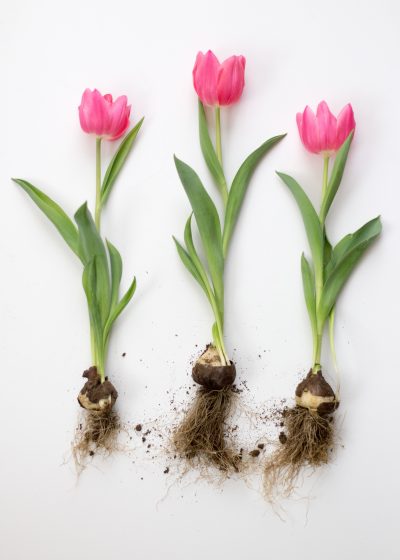 What do tulips and daffodils do for our urban ecosystem? What relationships do they support besides being eye candy for people? What is the carbon footprint of growing and transporting ornamental bulbs? Confession: I like tulips. But we can no longer devote public money and public lands to single-function plants. We cannot limit native understory species to natural areas. All New Yorkers should have everyday exposure to plant biodiversity. Let’s plant native early spring bloomers–trout lily, spring beauty, mayapple. To those who might argue that certain species cannot thrive in certain urban environments, I do not accept these limits, and neither should you. I have seen native species growing in “unlikely” places. We should redesign and manage our cities to support more nature and greater ecological function everywhere.
What do tulips and daffodils do for our urban ecosystem? What relationships do they support besides being eye candy for people? What is the carbon footprint of growing and transporting ornamental bulbs? Confession: I like tulips. But we can no longer devote public money and public lands to single-function plants. We cannot limit native understory species to natural areas. All New Yorkers should have everyday exposure to plant biodiversity. Let’s plant native early spring bloomers–trout lily, spring beauty, mayapple. To those who might argue that certain species cannot thrive in certain urban environments, I do not accept these limits, and neither should you. I have seen native species growing in “unlikely” places. We should redesign and manage our cities to support more nature and greater ecological function everywhere.
The push for the “green” in nature-based green cities must come from public agencies. State and local governments must embrace their power as consumers and drive substantive changes in the horticultural marketplace. We have seen this change before. To seed the City’s MillionTreesNYC initiative, the New York City Department of Parks & Recreation (NYC Parks) directly contracted with three nurseries for their street tree procurement system (Jonnes 2016). Because of this one-to-one relationship, NYC Parks was guaranteed their preferred species as well as consistently high-quality plants (Stephens 2010). Pennsylvania imposed a phased ban on the sale of Callery pear effective February 2022 (PA Pressroom 2021).
Governments at all levels tout their sustainability plans but, as they relate to plants, these proposals are a form of shallow sustainability. We need ideas and on-the-ground projects that support deep resilience based on ecosystem functions. Cities and their proxies’ actors must become ecologically literate—total species richness is not enough. Native species outperform introduced species in terms of function even though from a distance they might appear structurally similar.
I do not want to see existing trees such as London plane trees or ginkgos removed to facilitate the planting of native species. We need to preserve our existing canopy. Mature trees absorb more particulate matter, store more carbon, and provide cultural benefits. Have you foraged and eaten ginkgo seeds? They are delicious! But when a plane tree or a ginkgo falls in a park, let’s replace these trees with native forest species. Oaks support many of our breeding bird populations (Narango et al. 2020) but other genera to consider in our parks are Carya, Fagus, and Betula (Doroski et al. 2020). The species choices we make for parks and streets can impact our natural areas; trees in our cultivated landscapes are a seed source for forested natural areas (Doroski et al. 2020).
There is even greater potential to increase native plant diversity by looking below the trees. I am proposing a radical transformation in the understory of our neighborhood parks. New Yorkers are familiar with the knockout rose and Russian sage pairing ubiquitous in many parks. We see ornamental cherries, non-native dogwoods, cherry laurel, Japanese aucuba, and mop-head hydrangea wherever we go. Our smaller parks don’t have plant identities. The sameness of the plant palette leads to fatigue, especially outside of the exuberance of spring flowering and fall color. Many of our parks are not remnant ecologies; however, if they are planted with native species, then they can satisfy the human demand for beauty, offer multi-seasonal liveliness, and function as high-quality habitat patches.
Andrew Grant
about the writer
Andrew Grant
Andrew formed Grant Associates in 1997 to explore the emerging frontiers of landscape architecture within sustainable development. He has a fascination with creative ecology and the promotion of quality and innovation in landscape design. Each of his projects responds to the place, its inherent ecology and its people.
Every nature-based green city needs a Botanic Garden for knowledge and inspiration
Botanic gardens are places of science where an extraordinary diversity of plants representing multiple biomes and habitats inspire not only wonder in botany but wonder in the physical and emotional impact that can be generated by different plant species.
Knowing plants is not just about understanding how they live, their habits, and their homes but, if we are to create truly inspirational and beautiful nature-based green cities, then it is essential to have the creative vision for how to use them.
Botanic Gardens are typically the places where these elements come together. Places of science where an extraordinary diversity of plants representing multiple biomes and habitats inspire, not only wonder in botany, but wonder in the physical and emotional impact that can be generated by different plant species. It makes me think every green city needs a Botanic Garden.
Singapore has two Botanic Gardens which provide the home for specialist expertise training and for beautiful plant collections that define the very identity of Singapore as a City in a Garden or a City in Nature. In our Gardens by the Bay project, the second Botanic Garden, plants were the client. Whist we helped shape the environment for the plants, the detailed knowledge of the diversity of species came from the horticultural experts within the National Parks Board of Singapore. Having such centres of excellence places a focus on the value of plants in the community and builds local pride and horticultural skills.
My landscape architecture course included weekly teaching sessions at the wonderful Royal Botanic Gardens, Edinburgh; an inspiring place of horticultural excellence and remarkable plants that has fed my imagination and understanding of how to use plants ever since.
Most landscape architects will have had a similar introduction to plants and planting design as part of their qualifications and training. This will involve an understanding of the soils, ground conditions, microclimate considerations, and maintenance that need to be factored in when considering selection of plants. Parallel to this technical awareness of plants is the need to know how to use them as part of a creative and ecological vision or concept. I was lucky to have my experience in horticulture at Edinburgh, but many landscape and ecology courses are less fortunate to have such resources, and I fear many students are emerging with limited practical exposure to plants and how to use them. There are exceptions, of course. The University of Sheffield Landscape Department has an enviable core team of experts who have helped pioneer new approaches to urban planting whilst inspiring and teaching thousands of students from around the world using hands-on techniques and research.
Ultimately, this is all about creating the infrastructure for people to learn about plants, and how to use plants in defining the future environment, alongside the establishment or retention of special places dedicated to horticulture and the enhancement of green spaces in cities. Can we create a renewed interest in Botanic Gardens that is less about their heritage and more about their future role as places where we invest in the wonder of plants and in the skills and training that go with the optimum use and maintenance of plants in our future cities?
The challenge is that such places are typically underfunded and in decline rather than being beacons of plant science and wonder. We need a new focus on how we create and maintain such places and will require a much more integrated approach from governments, city councils, universities, and all parts of the landscape, ecology, and horticultural industries.
Imagine if every city had a Botanic Garden.
Ian Shears
about the writer
Ian Shears
Ian Shears is one of Australia’s leading experts in urban landscapes and urban forestry. He has specialised in Urban Landscapes for over 25 years and has worked for over a decade with the City of Melbourne. Ian and his teams have been credited with the development of some of Australia’s most progressive environmental projects and polices.
How can the horticultural or ‘green’ professional be the fundamentally important voice of the plants? This ‘voice’ is critical in providing the knowledge of plant needs for growth and health, and the knowledge of what the potential of the plant is to provide maximum benefits.
In recent times there has been a rethink and repositioning of the role of city greening, its importance to the health and wellbeing of the community, and the liveability of the city. Traditionally green components of cities were viewed from a heritage, aesthetic or amenity perspective. Changing climate, urban densification, urban heat island effect is placing significant pressure on the built fabric, services, and people of the city. A healthy, resilient, and thriving ‘green infrastructure’ is now recognised as playing a critical role in responding to these challenges and conferring environmental service benefits, urban cooling, health, and wellbeing outcomes. The myriad benefits span economic, social and environmental, and political domains, are interrelated, with each feeding cumulatively into the creation of resilient and sustainable urban landscapes.
The knowledge of the benefits of urban greening is well-researched and documented. Translating this ‘benefit’ knowledge into on-ground (or on roof or wall) outcomes is critical to ensure successful outcomes, and to unleash the potential of having nature at the heart of urban planning and design. This transference of knowledge is in essence the ‘applied’ component of horticultural science.
The greening or ‘renaturing ‘of cities involves three distinct, interrelated applications of the idea. Expanding the use of green infrastructure, protecting and enhancing ecosystems and biodiversity, and providing people ways to immerse in nature. Each of these methods involves innovative practices used at multiple urban scales and applies to ‘green field’ locations or retrofitting dense built part of the city.
In unpacking each of these areas it becomes clear that there is a wide range of professional skill sets required to come together to imagine and realise ‘thriving’ outcomes. So how can the horticultural or ‘green’ professional be the fundamentally important voice of the plants? This ‘voice’ is critical in providing the knowledge of plant needs for growth and health, and the knowledge of what the potential of the plant is to provide maximum benefits.
Reflecting on what the ‘green voice’ is provides insight into what knowledge is needed, and how to input and embed the knowledge. The wide range of urban environments that plants will need to tolerate and thrive is expanding and plant knowledge will need to encompass this need. Ecological considerations and biophilic connections between people and nature are increasingly important considerations in urban settings.
Design, implementation, maintenance, and evaluation are critical processes that green professionals and the horticultural industry are able to inform contemporary best practice in the wide range of urban greening projects. Provision of high-quality climate-ready plant materials is increasingly important. This is particularly important with long-lived greening elements such as trees. Trees are vulnerable to increases in urban temperatures, and determining how existing trees will fare is as critical as selecting new species to plant.
Of many green infrastructure elements, green roofs, walls, and facades are becoming more common green components of cities, reflecting the paucity of urban space for more traditional greening. The horticultural industry is well placed to provide knowledge on planning, design, and maintenance of these elements.
Another emerging field is nature immersion, understanding why nature improves happiness, health, and creativity. Biophilic urbanism describes the need for human beings to connect with nature and the natural environment. Cities committed to a biophilic approach focus on increasing the amount and quality of nature that is present in the city – and on improving access to it.
Contemporary city greening is providing many opportunities for the horticultural sector and its players. Understanding what knowledge is needed and how to impart that knowledge strategically is a great opportunity.
Nikara Mahadeo and Ernita van Wyk
about the writer
Nikara Mahadeo
Nikara is a Professional Officer: Biodiversity, Nature and Health at ICLEI Africa. Nikara holds an MSc Environmental Sciences (University of KwaZulu-Natal) and an MPhil in Conservation Leadership (University of Cambridge).
about the writer
Ernita van Wyk
Ernita is a Senior Professional Officer: Social-ecological systems at ICLEI Africa. Following initial training in ecology and conservation, Ernita’s interests and work have spanned the design and implementation of research and operational work in the fields of invasive species, adaptive management, biodiversity mainstreaming, and environmental stewardship, over a period of 24 years. Ernita holds a PhD in Environment and Development.
Rapid urbanisation poses significant challenges, but it also creates the opportunity to develop and design more resilient and sustainable cities, inspired by nature and biodiversity. The integration of nature-based solutions (NBS) in land-use planning and development is one such opportunity in cities.
Nature and biodiversity play a critical role in meeting societal needs, with urban communities depending significantly on intact and novel ecosystems to sustain them. Urbanisation, however, is one of the biggest threats and risks to native biodiversity, with residential; business; and industrial infrastructure readily displacing natural areas & species, including plants. It is currently estimated that globally, 2 in 5 plant species are threatened with extinction. This threat can negatively impact human well-being, particularly for those living in cities, as plants produce the air we breathe; food and medicines; cooling of cities, amongst other critical services.
Rapid urbanisation poses significant challenges, but it also creates the opportunity to develop and design more resilient and sustainable cities, inspired by nature and biodiversity. The integration of nature-based solutions (NBS) in land-use planning and development is one such opportunity in cities. In some instances, NBS can be more cost-effective than grey infrastructure alternatives, adding social and economic value over the longer term. Using plants in the implementation of NBS can have multiple benefits, as plants are fundamental to well-functioning ecosystems and are known to adapt to changing environments. For example, creating green open spaces by planting trees and other vegetation can support cooling; improve air quality; and increase biodiversity and beautification in cities. Urban areas with more diverse ecosystems will have greater resilience to shocks, whilst also addressing challenges associated with climate change; food and water security; and mitigate risks to public health; and reduce disaster risk.
In Africa, it is thought that NBS have not readily been used as much as they have in other parts of the world. However, many would argue that NBS solutions have long been a part of many African initiatives but have just not been termed so. Africa is one of the fastest urbanising regions of the world. This growth, however, threatens some of the richest biodiversity, including plants, across the continent. As a result, a significant proportion of African livelihoods are at risk, due to the dependency on ecosystem services, which this biodiversity provides.
Through the INTERACT-Bio Project, the Dar es Salaam City Council has recognised the value of integrating NBS into land-use and development planning. As part of the project, a catalogue on the City’s indigenous biodiversity, focusing primarily on plants, is being compiled. Dar es Salaam is located within the East African Coastal Forest biodiversity hotspot, however, nurseries and urban greening initiatives have traditionally grown and used exotic species. Therefore, the aim of the catalogue is to help create awareness in the City Council, nurseries, and the general public of the rich variety of indigenous coastal forest species that could be used in NBS initiatives, such as ecosystem restoration and urban greening. A good understanding and field knowledge of the local indigenous species was required to develop the catalogue, therefore suggesting that the use of plants in NBS does require the expert skills of horticulturalists, botanists, plant taxonomists, and the like. In addition, different species have different characteristics, therefore, this knowledge can be useful in understanding what ecosystem services different species provide. Using this information can ensure that the best combination of species is used in NBS, to ensure that the maximum ecosystem services benefit is derived. Furthermore, using a variety of species in NBS not only increases biodiversity, but also enhances the functional resilience of urban ecosystems. It is therefore critical that plant biodiversity is promoted in NBS, particularly in fast-growing cities, not only to ensure resilience and sustainability, whilst meeting development needs, but also to sustainably manage and restore ecosystems; and address social challenges, to improve human well-being and quality of life in cities.
Richard Hallett and Max Piana
about the writer
Richard Hallett
Dr. Richard Hallett, Research Ecologist, USDA Forest Service, NYC Urban Field Station Dr. Hallett (B.S. UW-Madison, M.S. and Ph.D. UNH)has spent his career studying tree and forest health in the northeastern U.S.
about the writer
Max Piana
Max Piana is a research ecologist for the USDA Forest Service, based in Amherst, MA. He currently co-leads the Urban Phytotechnology Project in Philadelphia and the Urban Silviculture Network, which spans eight cities in the northeast U.S.
Now, as we plan for the future, we are beginning to think about how to maximize the benefits trees and plants provide the city.
In our response, we will focus on trees in cities. The knowledge base for planting the right plants in the right places comes from:
- Empirical evidence – urban foresters and arborists are keen observers of the urban environment and institutional knowledge can help inform urban greening strategies.
- Research on urban ecosystems – rigorous studies have focused on specific species and urban environmental conditions and can be used to inform management decisions.
- Research on rural ecosystems – Forest management has been studied for over 100 years in forested ecosystems around the world. This body of work is particularly relevant to how we might think about managing urban forested natural areas in cities.
Trees are typically long-lived and, when we invest in planting a tree in a city, the hope is that it will grow and thrive in that spot for several decades. This tree not only needs to establish itself in today’s challenging and complicated urban environment but will need to thrive in an environment that exists several decades into the future. This future environment will likely be warmer and wetter or dryer. Three important factors come to mind when thinking about the future of urban nature. These involve sourcing plants that are: 1) urban-adapted; 2) climate-adapted; and 3) ecosystem service-adapted.
A paradigm shift is beginning in the urban forestry world as land managers start to think less about restoring to some previous condition and more about what the future might bring to a newly planted tree or forest. Urban forestry has never really focused on extracting forest products but rather has relied on the many benefits or ecosystem services trees and plants provide to urban residents. Now, as we plan for the future, we are beginning to think about how to maximize the benefits trees and plants provide the city. Can we select species or genotypes that are more salt-tolerant to plant in coastal zones that will experience more saltwater flooding? Are there species or genotypes that are particularly effective at removing water from the ground after a major storm event? Are there species that are better at surviving in the high temperatures found in the urban heat island, and are there species that are better at cooling the environment?
The horticultural industry is already adept at breeding and selecting plants for desirable traits such as aesthetics or yield. Is it feasible to move towards a model that emphasizes regional needs by providing native and/or adapted plant stock that also works toward selective breeding to maximize critical ecosystem services like stormwater or heat island mitigation? Can economies of scale be created by establishing regional hubs including metropolitan land managers and plant producers to maximize the benefit that plants provide to cities? Are there ways to share knowledge focused on local propagation of planting stock via seed sourcing/sharing, clonal propagation, and/or the creation of seed orchards of adapted species?
Bringing together horticulturalists, urban forest managers, and scientists to focus on breeding, enhancing, and producing trees and plants that can maximize the ecosystem services provided to urban areas might be a way forward for future nature-based green cities.
Mike Wells
about the writer
Mike Wells
Dr Mike Wells FCIEEM is a published ecological consultant ecologist, ecourbanist and green infrastructure specialist with a global outlook and portfolio of projects.
The expertise is out there, but the focus and coordination towards practical application in urban areas are rare. Perhaps a good starting point would be a series of international conferences to establish frameworks of required information and the basis for plant selection in urban landscape design in general.
- Knowledge of historical ecology. Often the list of species that occupied a site pre-urbanisation is unknown or challenging to compile.
- Knowledge of autecology. For some plant species, there is extensive literature relating to a multitude of autecology characteristics, but the information is disparately spread across a very wide range of sources (and languages), in forms not readily accessible to the non-academic practitioner. But even for the most researched plant species, there are often large gaps in what is known about their full requirements. Information that might be needed includes intrinsic conservation value (e.g., rarity, threat status), germination, soil and plant husbandry requirements interdependencies, and mycorrhizae, and positive and negative reactions with other plants (see e.g., Wohlleben’s The Hidden Life of Trees, 2018). Also, when we create urban habitats as refuges of plant species that are both naturally rare and threatened, the autecological requirements may be particularly exacting and difficult to recreate and maintain in the urban realm. We also may need to consider the change in requirements, needs, form, appearance, and functions through the year and between years and successional interactions and characteristics. Intrinsic characteristics that are particularly important in a plant species’ ability to adapt to environmental change (e.g., C4 metabolism) are also crucial.
- Knowledge of functional potential: To optimize our urban realm, we need to simultaneously consider the following for each plant species and then construct planting designs based on optimization of cumulative functions:
- Faunal and floral support potential: Capacity to support native fauna and other flora (and the degree to which this depends on co-evolution, see e.g., Garland and Wells, 2021 in the Handbook of Urban Ecology.)
- Capacity for ecosystem service provisioning, aesthetic appearance throughout the year, cultural significance, capacity for shade provision, ability to remove pollutants from air and water, wind sheltering and breeze harvesting functions, food provision, and carbon capture potential.
- Negative functional characteristics: toxicity, allergenic properties, allelopathic qualities.
- Techniques to optimize plant community design. We are now starting to look at the optimization of urban ecosystem services in ecological design, for example, using systems such as developed in Germany and elaborated into models such as Envi-Met or ESII and into certification systems such as Greenpass. However, the level of sophistication of these models in terms of taking on board the differences between plant species is currently limited.
At present, urban design practitioners are generally obliged to mentally integrate and extrapolate the multiple characteristics and functionalities of plants through the lens and limitations of professional experience when selecting species for urban design palettes. This frequently reduces palette richness.
To develop a truly holistic model for balancing all these factors in urban design would be an impressive achievement but it is clear that it can only be achieved by concerted and directed interdisciplinary endeavour.
Relevant parties will include plant ecologists, physiologists, and socio-phytologists, conservation specialists, soil scientists, mycologists, horticulturalists, researchers into plant-animal interactions, urban historians, palaeobotanists, and ecological historians, medical toxicologists and allergenic specialists, eco-climatologists, and computer modelling and Internet of Things (IOT) experts. The expertise is out there, but the focus and coordination towards practical application in urban areas are rare. Perhaps a good starting point would be a series of international conferences to establish frameworks of required information and the basis for plant selection in urban landscape design in general. The Urban Plant Selection and Nurture Project could be born and find its champions.
Matthew Morrow
about the writer
Matthew Morrow
Matthew Morrow is the Director of Horticulture at Forestry Horticulture and Natural Resources, a division of the NYC Park’s Department. In this role he works to educate and support the gardeners and gardens of the agency, as well as the various native flora and fauna of New York City.
A robust and intelligent information sharing system with input from plant producers, ecologists, botanists, restoration specialists, horticulturists, landscape architects, gardeners, foresters, and city planners could feasibly create a repository for shared information, the purpose of which would be to grow the collective knowledge of useful plants and plant communities for use in our urban greenspaces.
The phrase “If you don’t grow it, you don’t know it,” was oft-repeated by one of my horticulture mentors, as they firmly believed that, if a genus or species of plants was not planted by and maintained by persons themselves, then only a hypothetical knowledge of said plant could be had. I agree with this to an extent, which is why collaborative efforts as listed below are so important. The specific, detailed information that a botanical observer records concerning a species as it exists in the “wild”, should be synthesized with the observations of the person who has grown and maintained that plant in a different setting. A robust and intelligent information sharing system with input from plant producers, ecologists, botanists, restoration specialists, horticulturists, landscape architects, gardeners, foresters, and city planners could feasibly create a repository for shared information, the purpose of which would be to grow the collective knowledge of useful plants and plant communities for use in our urban greenspaces. This data, if supplied to growers in the horticulture industry who have an interest in the concepts and possibilities of ecological gardening, natural areas management, and restoration bring, could provide them with the impetus and financial recompense that they require to partner with those involved in the intelligent greening of our urban spaces. Further alloying this knowledge with tried-and-true gardening wisdom can lead to a macro environment where “Right Plant, Right Place” no longer needs to be stressed or thought of too much, as it will be a baked-in concept, suffused as a guiding philosophy throughout the entire process.
In my opinion, the commercial horticulture industry has many things to atone for: a promulgation of invasive species, the over recommendation of unnecessary, often problematic pesticides and fertilizers, and gatekeeping the aesthetic ideals of the horticulture world to guide consumption of the products produced by favored manufacturers. However, the expertise and ability the horticulture industry possesses to produce high-quality plants on a grand scale is vast, impressive, and could be applied to the purpose of growing and supplying species that serve ecological functions our urban natural areas and greenspaces demand. It is very important for the plants that we include in the public-facing spaces in our cities to be comprised not only of mostly native species and useful to a wide variety of life but to fulfill the requirements of materials in an urban infrastructure. Meaning, they must be safe, appropriate as to habit and size, and tolerant of urban conditions. Finally, but no less importantly, they should be beautiful (or inspiring, compelling, conducive to poetic thoughts, etc.).
I will here emphasize that the role of experienced, passionate, and thoughtful city gardeners, who act often as ambassadors for our gardens and landscapes, educating and inspiring the people who move through and around these spaces cannot be minimized. These interactions can lead to some of these folks asking of their garden centers and nurseries to stock plants that we want to use in our public greening projects, providing further incentive for the horticulture industry to prioritize production of these plants, as their market will have expanded. A benefit of this would be that home gardeners in our cities could be activated to working towards the same goals as our city agencies, will become de facto partners when it comes to nature-based solutions to urban greenspace issues. Though a general idea, the specific measures needed to increase the knowledge of plants and their importance to the future of our greenspaces begins with a conversation between a variety of people who have complementary special knowledge bases. To sum up, better knowledge of plants should come from everywhere.
Mark Hostetler
about the writer
Mark Hostetler
Dr. Mark Hostetler conducts research and outreach on how urban landscapes could be designed and managed to conserve biodiversity. He conducts a national continuing education course on conserving biodiversity in subdivision development, and published a book, The Green Leap: A Primer for Conserving Biodiversity in Subdivision Development.
Horticulture Industry: Shifting Conventional Norms in Cities
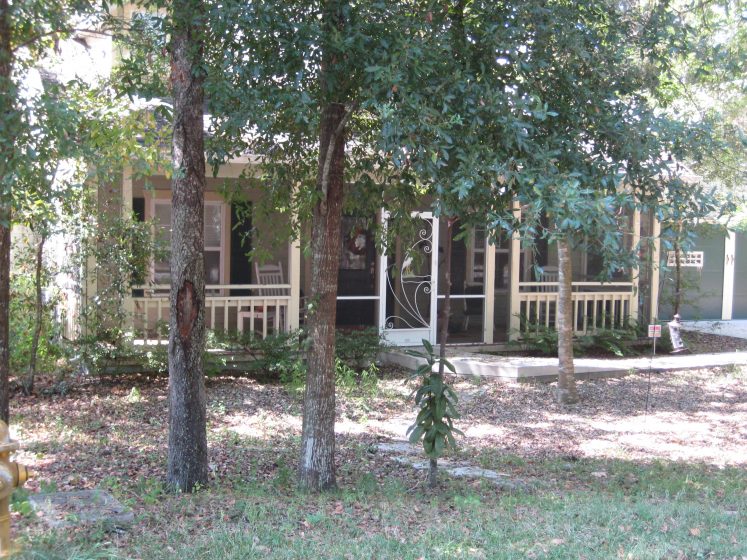
A continuum exists between highly manicured landscapes that contain mainly monoculture turfgrass and exotic plants to totally wild yards that contain mainly native plants. The horticultural industry, in my opinion, needs to investigate paths forward to shift towards more alternative landscape designs.
I am going to take a slightly different angle on this roundtable prompt. When talking about eco-friendly yards and common spaces in green cities, design professionals, city planners, homeowners, and even the horticulture industry often say, “Well, it cannot be too messy!” My immediate thought is: What is too messy? Aesthetic preferences are in the eye of the beholder and are shaped by experiences, culture, societal norms, and values. A continuum exists between highly manicured landscapes that contain mainly monoculture turfgrass and exotic plants to totally wild yards that contain mainly native plants. The horticultural industry, in my opinion, needs to investigate paths forward to shift towards more alternative landscape designs.
Enter “cues to care theory.” Cues to care (Nassauer, 1995) is a phrase used to describe actions undertaken by humans that indicate a landscape is well cared for and meets cultural expectations for maintenance. According to this theory, there is a common expectation in societies that landscapes will be looked after, managed, and maintained to acceptable standards. This cues to care theory is used in the context of creating eco-friendly yards. If we can figure out how much minimum “cues” are needed to make a landscape acceptable, we can incorporate more native plants and wildness into yards. For example, are one trimmed hedge and 20% mowed lawn the expected ingredients?
Thus, what is needed is research that demonstrates what are the “cues” in landscape designs and how far can front/back yards and common spaces be pushed down the ecological continuum before people revolt? To date, very little appropriate research has been conducted to determine the cues needed for different cultures and situations (see more details from this blog) (Hostetler, 2020). From my experiences, landscapes tend to be dominated by conventional “cues” or designs by landscape architects and environmental horticulture professionals, even for eco-friendly landscapes. For example, ‘we need at least 50% mowed lawn’ is a cue that I have heard repeatedly.
To see greater adoption of eco-friendly landscapes in cities, there needs to be a movement in the horticulture industry to take chances. They need to try out different designs that have a reduced monoculture turfgrass footprint. Mavericks are there in the industry, but conventional inertia is quite strong. Perhaps the users (homeowners) are resisting, and subjective norms still perpetuate the adoption and management of conventional landscapes. But I also think the horticulture industry is not presenting enough alternative choices. An understanding of native plants that work well in different soil types will greatly aid in shifting the momentum. In fact, no plant will do well in sterile fill dirt that is typically used for grading on lots in new developments. The industry should push for compost-amended soils and for conserving the topsoil as much as possible.
Further, we do not know how malleable citizen preferences are, and we cannot “shift” preferences if most landscaping designs are based on mowed lawns and colorful vegetation. For example, if homeowners were presented with the environmental and economic costs of a manicured yard versus an alternative yard, perhaps they would be more willing to adopt a more eco-friendly yard. In particular, if an entire neighborhood, from the beginning, was designed with very little turfgrass and had lots of native plants, would not the homeowners in these neighborhoods have a different acceptance level? A new subjective norm? I bet so.
Ultimately, the goal is to have both attractive and ecologically functioning human-dominated landscapes. The challenge of shifting landscape preferences remains but the horticulture industry could play a significant role in shifting norms. Imagine, in your mind’s eye, patches of natural landscaping with complex vertical height structures that are bordered with landscaping rocks, trimmed hedges, etc. (all native plants). These bordering features would indicate human intent while simultaneously providing a more chaotic, natural landscape in the yard itself. Perhaps even educational signage is required to raise levels of awareness for novel yards (see neighborhood signs). Exploring peoples’ preferences when incorporating more natural landscaping needs to be researched and the environmental horticulture industry and maverick developers/homeowners need to try out new designs. Such studies and local examples will lead to the reduction of environmental impacts and create landscapes that are better for wildlife and humankind alike.
References:
Nassauer, J.I.. 1995. Messy Ecosystems, Orderly Frames, Landscape Journal 14/2, 161-170.
Hostetler, M. 2020. Cues to care: future directions for ecological landscapes. Urban Ecosystems. DOI 10.1007/s11252-020-00990
Luis Camargo
about the writer
Luis Camargo
Founder and Director of the Organization for Environmental Education and Protection (OpEPA). Luis is currently the Regional Latin America Vicechair of the IUCN Commission on Education and Communication.
Taking a big view perspective, the knowledge of plants should ultimately come from the day-to-day relation established with plants in the city. Appropriating our role as citizen naturalists is an essential aspect of this.
What are nature-based green cities? For me, the concept of a nature-based green city goes beyond the traditional conception of a city with parks and tamed nature corridors created primarily for recreation and the control of waterways. I imagine cities where multiple strategies are incorporated into the base conception of the city and how humans relate with nature within the city. Nature – biological corridors as part of the main green-urban structures, food gardens, smart nature buildings (green rooftops, green buildings, etc.), parks, urban protected areas, rewilded areas, natural waterways, wetlands, etc. and naturalized learning/playing spaces throughout the city.
The transition from traditional to nature-based green cities is not easy and requires understanding and political commitment. Cities must be re-molded to welcome nature back in. For this transition to occur, we must have better knowledge of plants as urban planners, as park managers, and as citizens in general. Taking a big view perspective, the knowledge of plants should ultimately come from the day-to-day relation established with plants in the city.
Appropriating our role as citizen naturalists is an essential aspect of this. Identifying different plants and their function in the same manner as we identify brands and their function would be a start. This would require not only access and contact with more plants and “natural spaces” but a “marketing” strategy in learning that allows every citizen to learn about and understand their natural environment (species, function, interrelations, and interdependencies).
City forests and biological corridors become a fundamental approach for access and contact. Stemming from these pockets of nature, green walkways that connect smaller parks and green areas full of key and diverse local species serve as bridges for fauna to move through the city, creating flows of non-human life. Green buildings are integrated, providing islands of green for birds and pollinators of all kinds.
There can be three types of spaces for human interaction within these green mazes: parks, nature classrooms, and food gardens. Parks as spaces for recreation can integrate planned, naturalized, and rewilded areas to ensure access to different expressions of nature. Inside parks or as intentional spaces, nature classroom created for formal and non-formal learning allows local schools and organizations to move out of the traditional classroom into plant-rich environments for learning, creating neutral spaces for learning encounters between groups allowing for learning ecosystems to emerge. Finally, food gardens in homes, rooftops, community gardens, and food forest strategies within the main green-city structures allow citizens to establish a more intimate relationship with the plant food sources that nourish us.
Darby McGrath, Amy Bowen, and Ryan Plummer
about the writer
Darby McGrath
Darby McGrath is the Senior Research Scientist for Environmental Horticulture and Program Lead for the Plant Response & Environment at the Vineland Research and Innovation Centre. She has a MES and PhD from the University of Waterloo. She is also an adjunct professor at the University of Waterloo and Brock University.
about the writer
Amy Bowen
Amy Bowen is the Director of Consumer, Sensory and Market Insights at the Vineland Research and Innovation Centre. Amy has a PhD in Biological Sciences with a specialization in Plant Science, Oenology, and Viticulture from Brock University.
about the writer
Ryan Plummer
Ryan Plummer is Professor and Director of the Environmental Sustainability Research Centre (ESRC) at Brock University. In addition to research and teaching, Ryan has led the development of the ESRC and several associated programs – Minor in Environmental Sustainability, Master of Sustainability, and Ph.D. in Sustainability Science.
From a UTVC perspective, better knowledge of plants and, thereby, success of nature-based green cities can be catalyzed by science and innovation, collaboration, and knowledge mobilization. Urban forests are novel ecosystems, and sound science is needed to underpin the entire value-chain.
Cities are confronting a myriad of challenges, such as rapid urbanization, increasing disasters, more extreme weather events, and threats to ecosystem services. Nature-based solutions are capturing attention as an innovative response to these and other challenges. In the specific context of Canadian urban forests, this generally manifests as directives to increase canopy cover. While increasing canopy cover in urban areas is critically important, substantive difficulties exist to realizing this aspiration. We fully concur that success of nature-based green cities is only possible with a better knowledge of plants and respond to the questions posed by drawing upon our recent work with urban tree value-chains (UTVC) in Canada.
Where does the knowledge come from? Understanding the pathways by which trees go from nurseries to planting is essential if canopy cover targets are to be met efficiently and effectively. The analogy of a chain is employed to represent linkages among the actors involved with trees from their source to end. While it provides an appropriate starting point, UTVCs are complex, interdependent, and multi-level networks. UTVCs are understudied, with comprehending interactions and decision-making of actors involved identified as essential. Recent advancement in this regard has occurred in Ontario, where research revealed the UTVC to consist of multiple pathways, one based on the flow of products and the other based on the flow of knowledge and communication. Concerningly, urban forest governance in Canada is not comprehensively reflected in value-chain studies to date. It remains fragmented and multi-faceted, with a relative dearth of federal and provincial involvement, considerable municipal purview with diverse policy approaches, and extensive influence of private landowners.
Can the horticultural industry be more useful? Absolutely! Key actors in the UTVC come from the horticultural industry. The following scenario helps to understand the complexity of the UTVC and illustrates how the horticultural industry can be more useful. A city is updating their urban forest management plan. A key component of the plan is their projected tree plantings specifically, the objective of increasing tree diversity. This one objective has implications across the UTVC.
- Has the city updated their soil specifications to support a diverse tree canopy? Are the soil suppliers prepared to provide the specified materials to support these trees?
- Are landscape contractors aware of changes in the specifications and preparation techniques?
- Has the city ensured that recommended trees are available in nurseries as finished stock?
- Are the propagating nurseries prepared to meet these changing demands by their finishing nursery customers?
- What of the tree care companies that will be maintaining trees through juvenility?
These questions pose common gaps in communication and evidence where actors from the horticultural industry can make key contributions.
From a UTVC perspective, better knowledge of plants and, thereby, success of nature-based green cities can be catalyzed by science and innovation, collaboration, and knowledge mobilization. Urban forests are novel ecosystems, and sound science is needed to underpin the entire value-chain. Collaboration is required to remove barriers between actors and build collective capacity. Knowledge mobilization, which is reciprocal amongst value chain actors, provides a basis for decision support tools, evidence-based decision making, and science-informed policies. While approaches that bring these touchstones together are scarce, the Greening the Landscape Research Consortium is a recent example in Canada. It employs a research consortium model in response to challenges and opportunities with the urban forest value chain and serves to illustrate a novel way forward.
Martha Fajardo
about the writer
Martha Fajardo
Martha Cecilia Fajardo, CEO of Grupo Verde, and her partner and husband Noboru Kawashima, have planned, designed and implemented sound and innovative landscape architecture and city planning projects that enhance the relationship between people, the landscape, and the environment.
LALI Re-orienting nature-based solutions with ancestral-cosmovision thinking.
Learning and respecting the ways of today’s indigenous and traditional peoples, and integrating them into environmental and developmental considerations, will prove indispensable for the survival of our biodiversities.
As a concept, Nature-Based Solutions (NbS), is a big IUCN call and “invention”. We appreciate the funding of timely initiatives by the European Commission (Horizon 2020), bringing together Latin American and European partners to strengthen international cooperation on NbS and ecosystem restoration providing knowledge in co-creating suitable “nature-based cities”.
Special emphasis on these EU policy agenda aims in ‘Innovating with nature’. However, at the Latin American Landscape Initiative, we find ourselves in a stage of inspiration on how to nurture and appropriate this vision for Latin America, making sure our collective brings in the cosmovision of ancestral peoples and local communities and a less utilitarian outlook on nature.
Latin America’s experience with nature dates to indigenous knowledge systems and values that travel through rural and urban settings. This vision sees spirituality, healthy landscapes, and ecosystems as vital for supporting human life and social cohesion. Learning and respecting the ways of today’s indigenous and traditional peoples, and integrating them into environmental and developmental considerations, will prove indispensable for the survival of our biodiversities.
Nearly half of Latin America’s indigenous population now live in urban areas, in areas that are less secure, less sanitary, and more susceptible to disaster. But, people-nature’s values, beliefs, which considers their voices, cultures, and identities are not sufficiently included in city planning, design, and implementation, then NbS can be unjust, hopeless, and fail to provide multiple values, ethics for nature, beings, and society.
Latin America is a continent with historical and cultural unity and a vibrant and changing social and economic reality. In this vast territory with diverse morphologies, climates, ethnicity, and development patterns, there are also strong and lasting unifying ties, such as a common historical, indigenous past, and the bonds through which we built our present societies. In this context, the landscape is the tangible expression of these constants of unity within diversity. Inspiring by both the cosmovision of Latin American indigenous peoples and the European Landscape Convention we created the Latin American Landscape Initiative (LALI).
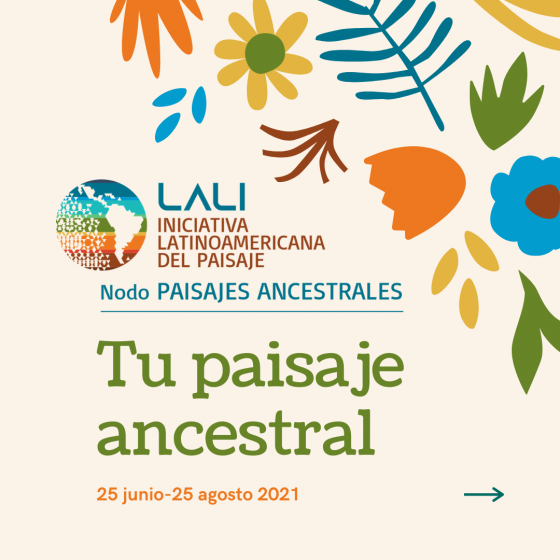 LALI comes as a declaration of fundamental ethical principles to promote the recognition, valuation, protection, management, and sustainable planning/design of Latin American landscapes through the adoption of agreements that recognize local, regional, and national diversity and values, tangible so much as intangible, of landscape, as well as principles and processes to safeguard it.
LALI comes as a declaration of fundamental ethical principles to promote the recognition, valuation, protection, management, and sustainable planning/design of Latin American landscapes through the adoption of agreements that recognize local, regional, and national diversity and values, tangible so much as intangible, of landscape, as well as principles and processes to safeguard it.
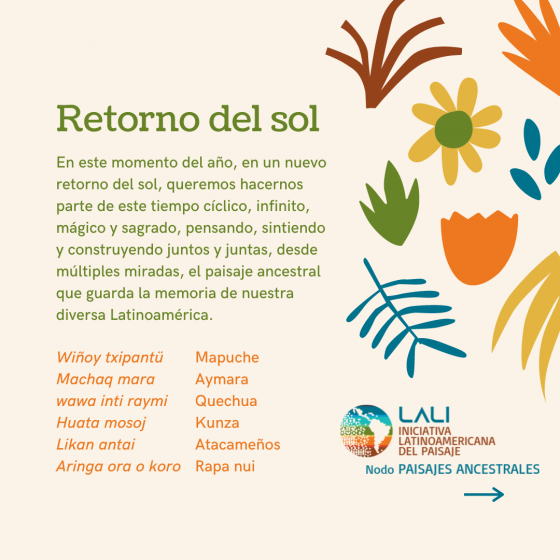
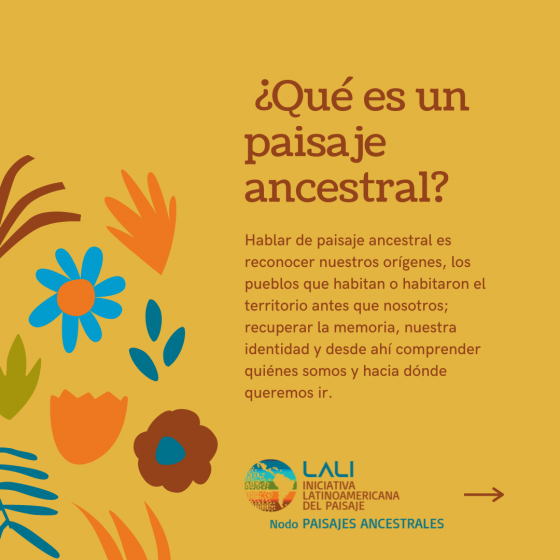 LALI work through clusters, which translates itself as a network, a system that is nourished by cooperation, cocreation, pacts, and the charitable work of key people in Latin America. It grows and becomes stronger through its Clusters. The Ancestral Landscapes Cluster is one of those which aims to recognize, recover, and disseminate the values -tangible and intangible- of ancestral communities/landscapes, inhabited and given meaning by the different native peoples of Latin America, to contribute to their appreciation, understanding, and protection.
LALI work through clusters, which translates itself as a network, a system that is nourished by cooperation, cocreation, pacts, and the charitable work of key people in Latin America. It grows and becomes stronger through its Clusters. The Ancestral Landscapes Cluster is one of those which aims to recognize, recover, and disseminate the values -tangible and intangible- of ancestral communities/landscapes, inhabited and given meaning by the different native peoples of Latin America, to contribute to their appreciation, understanding, and protection.
The understanding is embedded in a cosmology that reveres and considers nature as sacred and acknowledges humanity as a part of it. The Network invokes indigenous people’s values, asking the world to reevaluate our relationship to “Pachamama”; therefore, we can turn away from ruining, privatizing nature, to create solutions by re-sacralizing our relationship with Mother Earth.
This is part of the contribution that LALI and its Ancestral Landscape cluster, can give to the highly recognized nature-based solution concept to make better, greener equity and more sustainable cities.


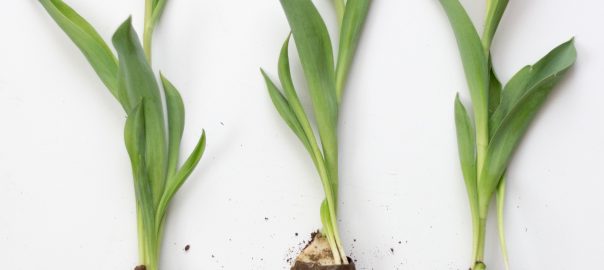
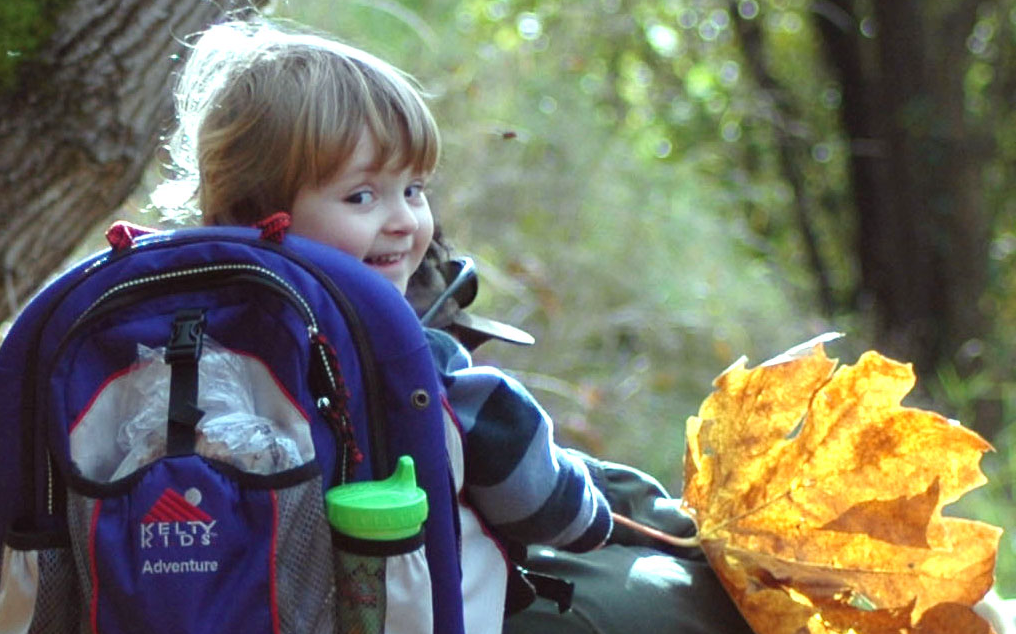
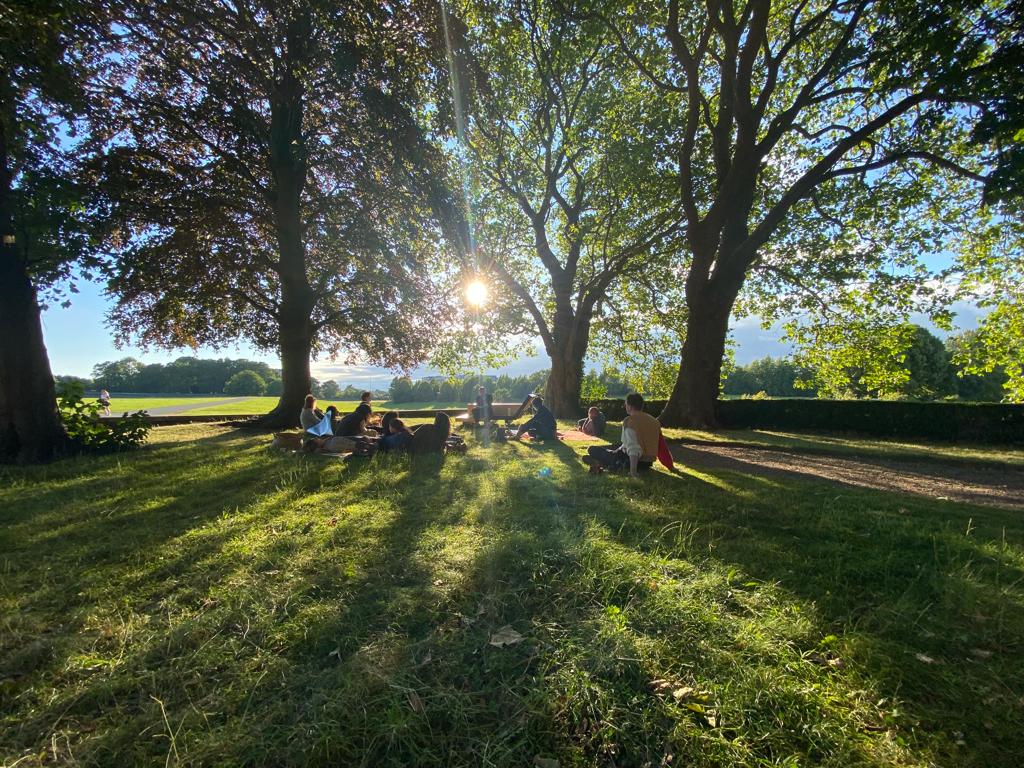

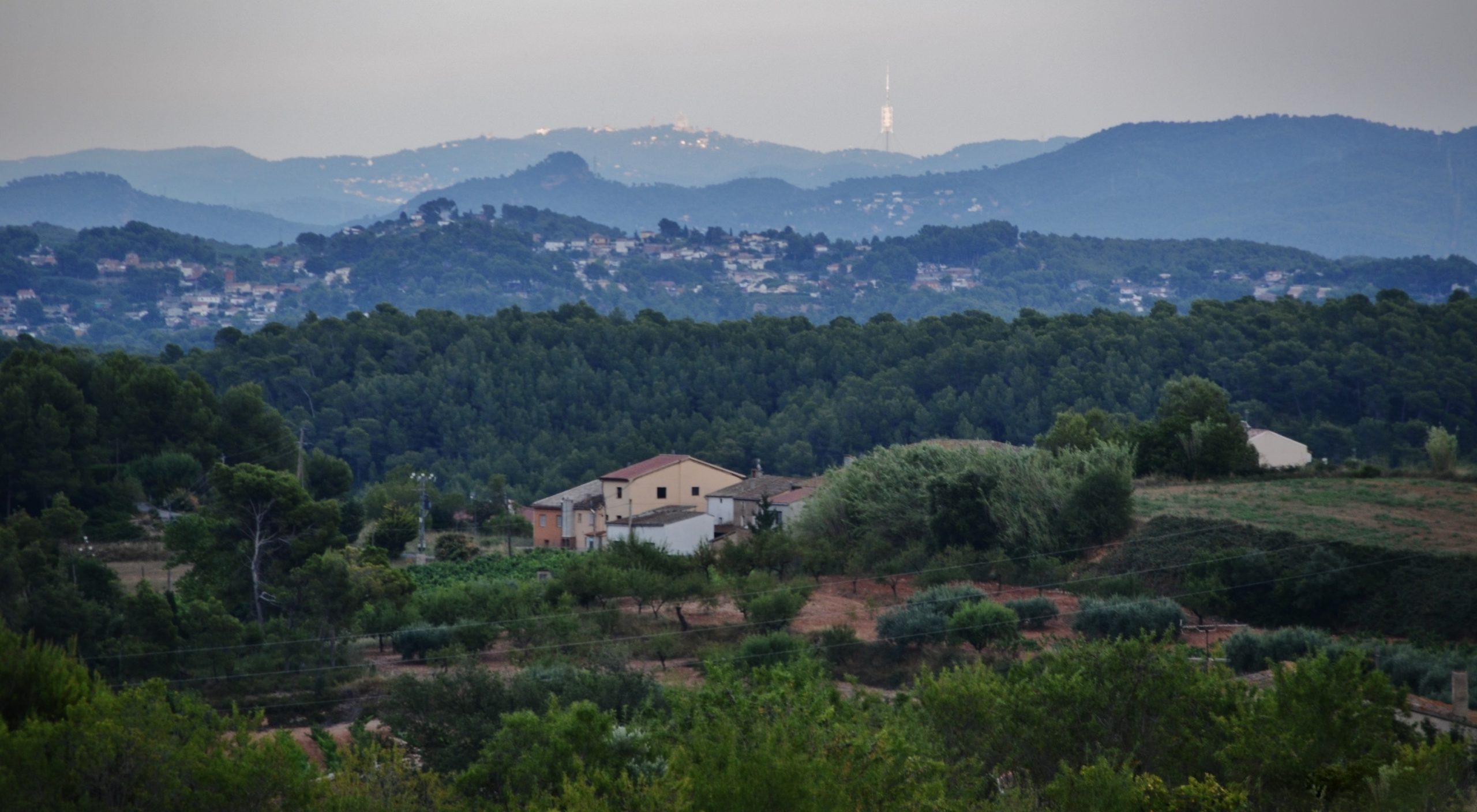
Leave a Reply